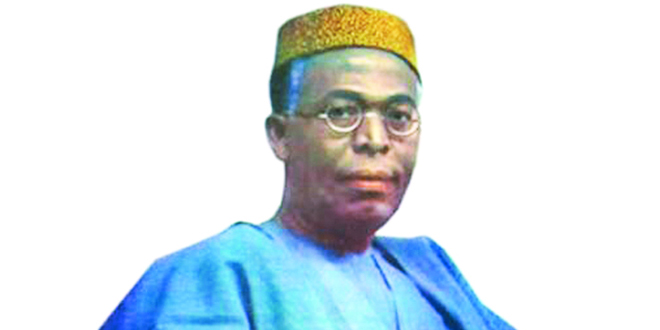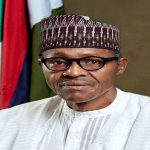
FEATURE: Thoughts For Today's Yoruba Leaders – Prof Banji Akintoye
 Something I have been reading in the past few days has left me thinking, wondering and worrying. I refer to something in our Yoruba homeland, something that only few of us know anything about – something from the early history of our Yoruba nation, some construction so big that one account describes it as “the biggest historical monument in the world”.
Something I have been reading in the past few days has left me thinking, wondering and worrying. I refer to something in our Yoruba homeland, something that only few of us know anything about – something from the early history of our Yoruba nation, some construction so big that one account describes it as “the biggest historical monument in the world”.
I refer to the Eredo, the Ijebu-Ode city wall that is believed by archaeologists to have been constructed between the 10th and 12th centuries AD, or about one-thousand years ago.
It is commonly called Eredo Sungbo, because Ijebu-Ode traditions say that it was constructed in the reign of an Ijebu-Ode queen named Sungbo. Some of the 15th and 16th century Portuguese explorers and traders along the Yoruba coast heard about the Eredo and mentioned it in their writings.
In modern times, many historians have mentioned it in their books. But it was little known to the outside world until 1999 when a British archaeologist, Professor Patrick Darling of Bournmouth University, surveyed the site and published his findings. Since then, the Eredo has been attracting worldwide attention.
Built by the people of early Ijebu-Ode around their town with considerable farmland around it, the Eredo is about 100 miles in circumference, and encompasses an amount of land measuring about 25 miles from north to south and 22 miles from east to west. It is a typical Yoruba town wall consisting of a trench and an embankment made of the earth that was dug from the trench. In some parts of its length, the top of the embankment is as high as 70 feet from the bottom of the trench. The sides of the trench are made remarkably smooth, testifying to the high skills of the diggers.
As a great structure constructed in early human history, the Eredo is now being compared with the Great Pyramid of Egypt. As more and more gets known about it, it is likely to come close to the Great Pyramid as one of the wonders of the African past, and one of the greatest archeological structures in the world – and, by far, the greatest in Black Africa.
Professor Darling estimates that the builders of the Eredo shifted about 3.5 million cubic feet of earth while constructing it – about one-million cubic feet more than the earth and rock shifted by the builders of the Great Pyramid.
The Eredo was probably the greatest of the town walls of Yorubaland in history, but it was by no means the only great one. Most of the Yoruba towns had impressive walls. Ile-Ife early built a great town wall which was expanded again and again at different times later in history. Ila Orangun’s wall was very famous for centuries – and the town was called Ila Yara (Ila of the Great Wall) because of it.
An Olowo of Owo, Oba Osogboye, expanded the Owo town wall spectacularly in the 18th century and made it one of the most famous town walls in Yorubaland. Ilesa, Owu, Oyo-Ile, Ado-Ekiti, and many other Yoruba towns had great town walls.
So, following upon the above facts and other known facts of Yoruba history, I have serious thoughts and questions – and serious worry. Since slave labour was never a significant factor in Yoruba economy, where did we Yoruba in those distant times get the labour for a gigantic construction like the Eredo? We can only assume that it was citizens’ labour.
In that case, the volume of the citizens’ labour force employed must have been very large; the organization for mobilizing such a large labour force too must have been very sophisticated indeed.
Altogether, what we are looking at here is that, as far back as a thousand years ago, Yoruba civilization was already very advanced.
Unlike most other peoples of Black Africa, the Yoruba nation already lived in towns large and small, under a detailed and gorgeous monarchical system, with a well ordered economy, and with very sophisticated institutions and norms of community life, community security and privileges, and community duty and responsibility.
The communal spirit of cooperation and mutual giving made it possible for the average Yoruba peasant family to make large farms beyond its capability and to produce goods and wealth beyond its capability. It also made it possible for the average lineage to build the typical Yoruba lineage compound with living quarters for tens of families and with open courtyards for group life and leisure.
Generations of Yoruba people throughout history have generally upheld and exemplified these strengths of their nation. When Western education was brought to Africa by Christian missionaries in the second half of the 19th century, the Yoruba people of that generation were better ready than probably all other Black African nations to accept it and benefit from it.
The Yoruba towns and cities, with their rich economic life, orderly system of governance, and system of security and order, became like bases prepared in advance for the churches and schools. By the end of that century, the Yoruba nation already possessed a growing and influential literate elite, a system for writing the Yoruba language, institutions like newspapers, traditions of Western-type research and scholarship, and authors, books, and book publication.
A 50-year period (roughly 1900-1952) followed during which British imperialism more or less prevented the natural flowering of Yoruba cultural and traditional strength in governance, leadership and socio-economic growth.
But when the British allowed the modern literate elites of different parts of Nigeria to begin to manage their peoples’ affairs from 1952 on, the then generation of Yoruba leadership of the Western Region, led by Chief Obafemi Awolowo, immediately sprang forth with the innate strength of the Yoruba nation, and gave the Yoruba in the Western Region the most orderly and most productive indigenous government in all of Africa.
Considering all the above, here then is my worry.
The present generation of Yoruba elite – the post-Awolowo generation – does not seem to have much in common with – and does not seem to be descendants of – the earlier generations of the Yoruba people and leaders.
When one looks closely at political and community behaviour of today’s generation of Yoruba elite, they do not appear to bear much resemblance with those Yoruba ancestors who mobilized their people to build the ancient Yoruba towns and great town walls and the splendid royal institutions, and who built the lineage compounds and maintained the peculiar grade of order in them, or the Yoruba generation of leaders who seized on Western education to make their nation about the leading nation in Africa, or the generation of Yoruba leaders who, in the 1950s, made the name of the Yoruba nation ring again with excellence and glory in nearly all fields of development and progress.
Members of today’s generation of Yoruba leaders are forever bickering over petty (often personal) considerations, interacting with Nigeria’s partisan politics at immature and superficial levels only, and appear to be incapable of perceiving, understanding, and responding appropriately to the obvious directions of Nigeria’s life and future.
Whenever occasion has demanded that they unite to rally in defence of principles and interests important to their Yoruba nation, they have usually mumbled their petty differences and allowed their nation, and the masses of their people, to suffer at the hands of other peoples of Nigeria. Efforts made again and again to stitch together or to harmonize a Yoruba leadership structure always stumbles and scatters.
If a group of today’s Yoruba elite holds a meeting, it is more likely to be for plotting against another group of fellow Yoruba; it is very unlikely to be for considering, and finding remedies for, the wounds being inflicted on the Yoruba nation in Nigeria.
All in all, this generation of Yoruba elite is losing, not only the greatness, but even the basic strength, and even the very existence, of the Yoruba nation.
But there is hope. If today’s generation of Yoruba elite choose to continue to never rise to the defence of the Yoruba nation, some future generation will rise up and revive, and rebuild, the Yoruba nation. In saying that, I am taking strength from an email message which a Yoruba youth, an undergraduate student of one of our universities, wrote to me some time ago, after he had read a book on Yoruba history.
Among other things he wrote: “We are watching sadly as our parents are failing our nation. My own generation, my friends and I, will not do as our parents are doing now. We know that our Yoruba nation is a great and proud nation. If our parents let the greatness and pride die, we will bring it back to life again”.
The kinds of strong Yoruba men and women who, in their respective generations, built the Yoruba towns, town walls, sprawling family compounds, great monarchical systems, and adorable systems of governance, who mightily transformed their Yoruba nation through the agency of Western education, who established free education, built our pipe-borne water supply systems, and our impressive and durable roads, who gave us Africa’s first television station and who, on the whole, taught to dream and be proud, will show up again. Some of them are already among us – in our schools, universities and unemployment lines.



